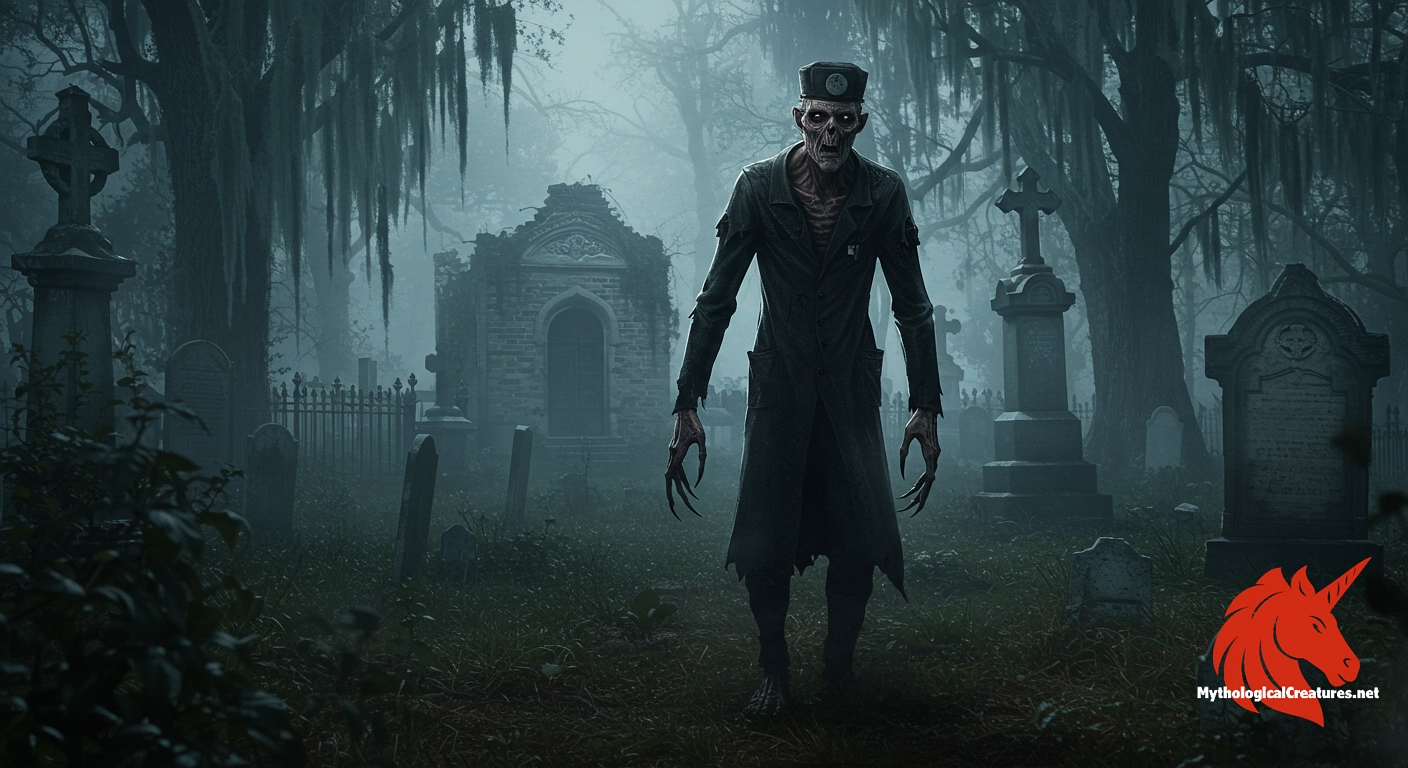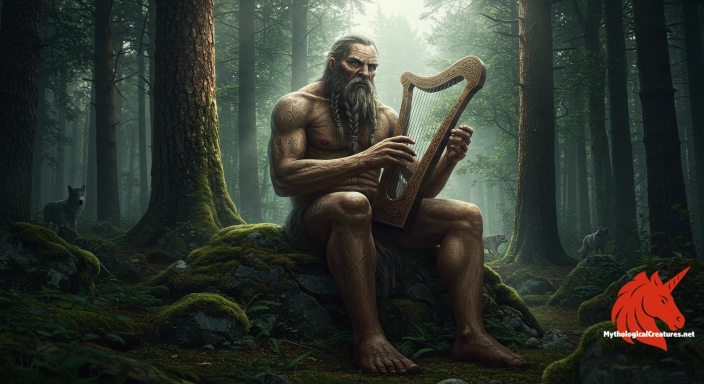Night Doctors: Night Doctors are bogeymen from African American folklore believed to abduct, kill, and dissect African American bodies for use in unethical medical studies.

Night Doctors
Night Doctors - Reflects historical medical exploitation and serves as a reminder of racial injustice.
Origins & First Encounters
The Night Doctors have long haunted the collective memory of African American communities as ominous figures whose origins intertwine deeply with historical injustices and spectral myth. Born out of real fears regarding unethical medical practices and exploitation during times of body shortages, these figures emerged from a backdrop of oppressive societal conditions in the American South. Their legendary provenance dates back to the 18th and 19th centuries, a period when the desecration of African American bodies for anatomical study was both a grim convenience and a grave injustice. Many in these communities perceived the Night Doctors not just as mythic apparitions, but as personifications of the betrayal experienced at the hands of trusted physicians. Over time, the narrative was shaped by both whispered warnings and documented atrocities, blending folklore with glimpses of historical fact. The terrifying idea that respected figures could turn into spectral predators resonated deeply in an era of disenfranchisement and exploitation. Tales of these enigmatic medics served as grim reminders of the hidden dangers lurking in society’s shadows. As a cultural symbol, the Night Doctors encapsulate the broader mistrust of authority—a mistrust born from long histories of dehumanisation and abuse. Their legend remains a potent emblem of the struggle against systemic injustice while evoking a palpable sense of dread. Even today, the legacy of the Night Doctors endures as both a chilling ghost story and a testimony to historical suffering.
Source Texts & Tale Variants
Stories of the Night Doctors have been passed down through generations, interweaving oral traditions with fragments of documented history. Early manifestations of the legend appear in community narratives and local anecdotes, where the mysterious activities of unscrupulous medical practitioners took on an almost supernatural quality. Written accounts in local newspapers and sporadic mentions in early medical literature reveal hints of a darker reality—one where unethical experiments and body snatching were not unknown practices. Variants of the tale have emerged over time, with some narratives referring to these figures as 'Night Riders' or even 'Black Bottle Men,' each name highlighting different facets of their alleged crimes. Folk songs, campfire recountings, and even cautionary tales at family gatherings helped solidify the myth’s grip on public imagination. The diverse recordings of these stories reflect the collective trauma experienced by many communities during periods of severe social and institutional marginalisation. Even as some elements of the accounts vary from one retelling to the next, the core theme of a hidden, malevolent presence in the dark remains consistent. These differing story variants not only highlight local regional influences but also mirror the broader societal incapacity to confront uncomfortable truths. In essence, the literature and oral sources surrounding the Night Doctors continue to be a mosaic of fact, fiction, and fear, each version deepening the legend’s multifaceted nature.
Form & Powers
Imagery associated with the Night Doctors is strikingly variable, blending the familiar attire of a medical practitioner with an unsettling, spectral presence. In many depictions, these figures are seen donning long, dark coats reminiscent of Victorian medical garb, an image which evokes a perverse twist on the sanctity of the healing profession. Their countenances are rarely depicted in clear detail, with many accounts hinting at a ghostly pallor and eyes that glisten with a predatory intensity under the dim glow of street lamps. Some portrayals even suggest that their features are obscured by surgical masks or heavy hoods, enhancing the air of anonymity and dread. The juxtaposition between the professional clothing and the sinister aura that surrounds them creates an eerie dissonance, symbolising a betrayal of trust. Frequently, their hands are described as unnaturally thin and bony, clutching archaic instruments that seem out of place in the modern world. In certain regional retellings, these figures are even said to appear taller or more elongated than normal, an exaggeration that amplifies their otherworldly menace. Small variations in their depiction—whether in the sharpness of their eyes or the tattered state of their garments—serve to illustrate the evolving nature of the myth over time. Ultimately, the physical description of the Night Doctors remains a fluid tapestry of horror, as mutable and elusive as the very fears they were designed to embody.
Regional Faces
The legend of the Night Doctors has travelled across various communities, acquiring unique local nuances that reflect distinct historical experiences and cultural backdrops. In the rural American South, where the realities of racial oppression and the misuse of medical authority were particularly pronounced, the stories took on especially dark and personal overtones. Among these communities, the Night Doctors were not merely monstrous figures, but tragic allegories of exploitation borne out of systemic injustice. In some locales, they are recast as spectral beings whose nocturnal activities mirror the fearful realities of body snatching and unethical autopsy practices. Urban centres, meanwhile, have adapted the myth to resonate with modern anxieties, casting these figures in roles that critique contemporary healthcare and institutional corruption. Local adaptations often blend African spiritual traditions with elements of European ghost lore, resulting in a richly layered narrative that defies simple categorisation. Even adjacent regions have intermingled the traditional lore with their own superstitions, leading to a tapestry of variations that emphasise different aspects of the fear and mistrust surrounding medical practitioners. These regional reinterpretations also reflect the varying degrees of historical exploitation experienced by different communities. Overall, the regional diversity in the tale of the Night Doctors underscores its role as a living cultural commentary, one that shifts in tone and detail according to place and time.
Cultural Parallels
Across many cultures, the fear of predatory figures who exploit the vulnerable finds its echo in tales remarkably similar to that of the Night Doctors. Comparable legends exist in European folklore, where body snatchers and spectral figures haunted the imagination during times of scientific and social upheaval. Much like the ghastly apparitions in Victorian London who were rumoured to secretly procure bodies for medical experimentation, the Night Doctors serve as a mirror to the anxieties generated by unchecked medical ambition. In various Latin American traditions, similar narratives emerge where shadowy figures traverse the night, blending elements of scientific endeavour with the supernatural. Asian folklore also carries its share of nocturnal spirits or saboteurs in the realm of healing practices, suggesting a universal paranoia regarding the sanctity of the body and the ethics of science. These cross-cultural parallels highlight a common human response to the exploitation that accompanies the pursuit of progress. At the heart of these legends lies a deep-seated mistrust of authority, which manifests in the figure of the benign professional turned sinister predator. The comparative study of such myths not only enriches our understanding of the Night Doctors but also situates them within a broader global tradition of cautionary tales against the abuse of power. Ultimately, these cultural parallels reveal that the Night Doctors are part of a wider tapestry of folklore, reflecting collective fears that transcend geographical boundaries and historical eras.
Legacy & Modern Evolution
The evolution of the Night Doctors narrative mirrors the shifting landscape of societal values and historical consciousness over the centuries. Initially rooted in the tangible horrors of body snatching and medical exploitation during the era of slavery, their image has gradually transformed into a symbol of broader systemic abuse and ethical malpractice. In modern times, the myth has been reinterpreted within artistic and scholarly contexts, serving as a potent allegory for the historical injustices inflicted on marginalised communities. Contemporary literature, film, and visual art have embraced the Night Doctors as figures who embody both literal and metaphorical corruption within the medical establishment. Their recurring appearance in urban legends and horror genres speaks to an enduring cultural anxiety—a fear that the past's unspoken atrocities may still linger in modern institutions. This transformation demonstrates how folklore can adapt to new societal challenges, casting these once-shadowy figures in a light that questions modern ethics and power dynamics. As discussions on racial injustice and medical ethics gain prominence, the Night Doctors have also become a rallying cry for recognising and rectifying historical wrongs. Their modern legacy is one of both dread and critical reflection, urging audiences to reconsider the complicated interplay between science, authority, and human rights. By evolving from a simple bogeyman figure into a multifaceted symbol of past and present wrongs, the myth of the Night Doctors continues to resonate and provoke thought in the contemporary cultural landscape.
Interesting Fact
The legend of the Night Doctors has evolved over time, merging historical fact with myth, and remains a powerful reminder of past injustices and the transformation of real horrors into enduring cultural symbols.
Quick Creature Info
Origin:
Features:
Our Mythic Legendary Rating:

Also Sometimes Known As:
Habitat:
Physical Attributes:
Abilities:
Behavior:
Lore:
Related Creatures, Tales or Lore
- TThe Boogeyman
- HHeadless Horseman
- SSlender Man
References
Discover Another Mythical Legend You May Not Have Heard Of?
Uncover the mysteries of ancient folklore and expand your knowledge of legendary beings from cultures around the world.
Dare to Meet the Eggþér....
Curated by the Mythological Creatures Team (rev. May 2025)
